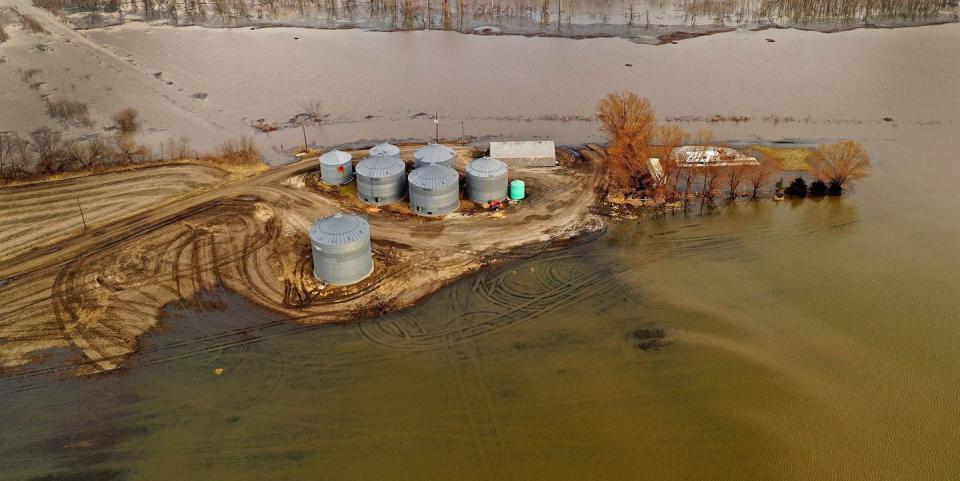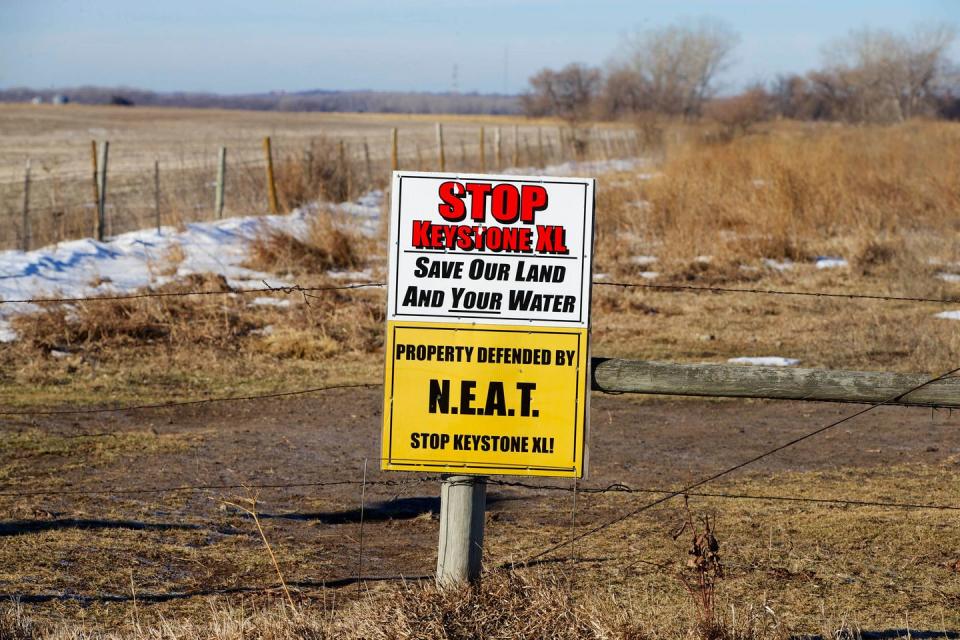The Keystone Pipeline Is Looking Worse Than Ever Now That the Midwest Is Prone to Massive Flooding

The massive flooding in the Great Plains not long ago came along with a particularly dangerous feature. The overflowing rivers carried huge chunks of ice downstream and these inland icebergs crashed and smashed everything in their path. Which got some of the locals to having even more serious doubts about the Keystone XL pipeline, the continent-spanning death funnel and conservative fetish object.
For example, what happens when the rivers flood again and one of the inland icebergs collides with some part of the pipeline that's above ground? From InsideClimateNews:
The Keya Paha flooded several weeks ago, and when it did, the rush of newly melted water drove debris, sand and huge chunks of ice deep inland, mowing down trees and depositing a long wall of ice 6 feet high and 30 feet wide across Allpress's property. "It would've taken out their shut-off valve," Allpress said of the river flooding. "Right where they propose to put it at. And it wouldn't have been a good thing."...
A former oil-field worker and avowed Republican, Allpress, like many local landowners, has long opposed the pipeline, which would pass through floodplains and erosion-prone land. Now, the catastrophic spring flooding that devastated parts of Nebraska has swept that threat into the spotlight, as the Trump administration works to fast-track construction by overriding environmental reviews.
The climate crisis, caused in large measure by the burning of substances like the poisonous glop that KXL is supposed to carry, has a role in the storms that cause the floods and, therefore, in the erosion caused by the floods, and the erosion causes problems with anything buried in the ground, like pipelines.
Without adequate environmental review, grave risks such as flooding and erosion "haven't been analyzed and the pipeline is going to go forward without agencies fully understanding risks and threats to the project," said Doug Hayes, a lawyer for the Sierra Club, which is a plaintiff in the suits. The threat to pipelines from erosion prompted the Pipeline and Hazardous Materials Safety Administration, the federal regulator responsible for the safe operation of the country's energy pipelines, to issue an advisory two weeks ago to pipeline owners. It urged them to institute safeguards after a recent spate of accidents from soil shifting around pipelines. In the last decade, fast currents and high floodwaters exposed two pipelines in the Yellowstone River in Montana that both ruptured, leaking a total of about 93,000 gallons of oil.
And this is a problem that some folks saw coming.

The risk to underwater pipelines from rivers scouring their beds has been known for years, including the threat it could pose to Keystone XL. But the recent Nebraska flooding brought the risks to the fore. A year after an ExxonMobil pipeline in the Yellowstone River was ripped open by scouring in 2011, the Wall Street Journal reported that pipeline oversight was so lax that dozens of other pipelines nationwide faced similar risks. The 2014 Final Supplemental Environmental Impact Statement (SEIS) for Keystone XL discussed the threat of river scouring, noting that "all states affected by the proposed Project are prone to ice jams on their major rivers, which often cause substantial backwatering and lateral scour."
Even under the Trump administration a new draft SEIS issued in 2018 said, "Flood events may increase the potential for a pipeline release because of erosion and channel migration. Erosion may arise from seasonal flood events or increased stream velocities, which in turn undermine support soils, increase lateral water force and increase the impact from waterborne debris. If a pipeline release does occur during a flood, pipeline components (e.g., valves, regulators, relief sets, pressure sensors, etc.) may become submerged and either inoperable or inaccessible."
My confidence in this administration*'s ability to cope with these kinds of disasters-massive flooding causing a massive tar sands leak in some of the most valuable farmland in the world-is not vast.
Respond to this post on the Esquire Politics Facebook page here.
('You Might Also Like',)
